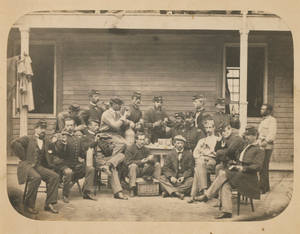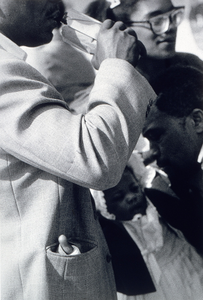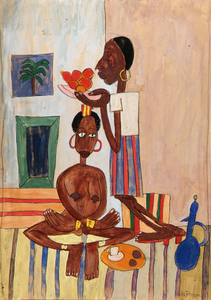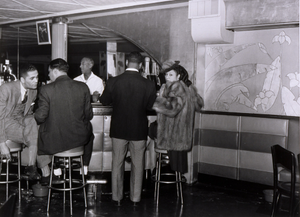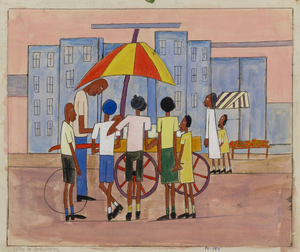Description
In New Orleans, Lawrence experienced firsthand the daily reality of Jim Crow segregation, where legislation required that he ride in the back of city buses and live in a racially segregated neighborhood. His anger is apparent in Bar and Grill, which shows the interior of a café with a wall that divides the space into two distinct realms – one occupied by whites, the other by blacks. Lawrence says little about the individuals beyond their skin color and the way they are treated (customers on the left are cooled by a ceiling fan), but the skewed vantage point from behind the bar emphasizes the artificiality of the two separate worlds.African American Art: Harlem Renaissance, Civil Rights Era, and Beyond, 2012Jacob Lawrence painted Bar and Grill shortly after arriving in New Orleans in late summer 1941. Although he had just finished the sixty panels of his epic Migration series, he had only second-hand knowledge of the South, the point of origin for thousands of rural blacks who had made the great migration to industrial cities of the urban north. The South was a new experience for the young New Yorker. Lawrence's mother had come from Virginia, his father from South Carolina, so as he remarked in 1961: "[In 1941] if you weren't born in the South, your parents were. Your life had a whole Southern flavor; it wasn't an alien experience to you even if you had never been there."Bar and Grill shows the interior of a café that is divided...
Image
Gouache On Paper
Smithsonian American Art Museum, Bequest of Henry Ward Ranger through the National Academy of Design












